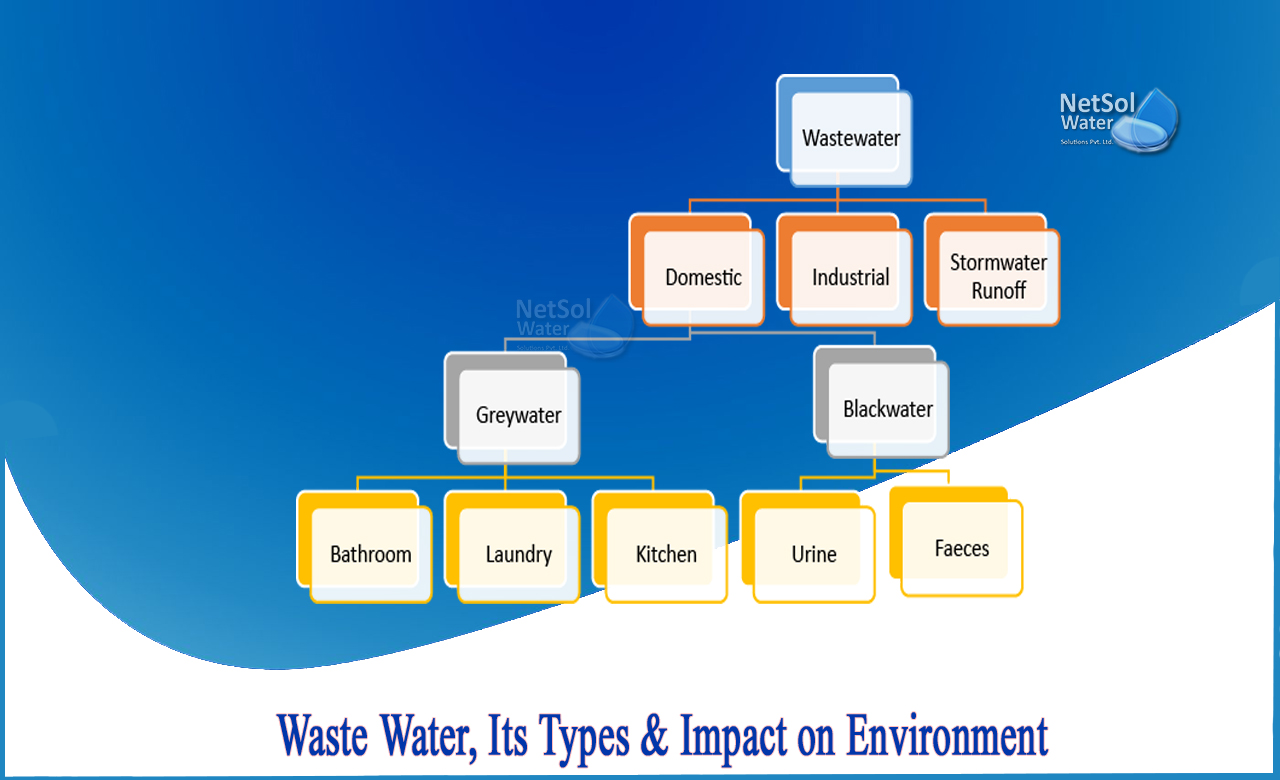What are the types of waste water & impacts of water waste?
Wastewater is any liquid waste or sewage that is generated by houses, hospitals, industries, or any other facility that uses water in its operations. It is a by-product of water consumption. As a result, anytime you turn on a faucet or flush a toilet, the water you consume will ultimately make its way to the ocean and other vast bodies of water. After treatment, this water is frequently dumped into a body of water. However, there are several cases where present wastewater treatment procedures are insufficient to ensure environmental safety. There are several elements that make making the water safe challenging.
Waste Water categories:
To begin with, wastewater is classified into two types: Sewage and non-sewage.
SEWAGE: Domestic wastewater is referred to as sewage. This includes residences, public restrooms, restaurants, schools, hotels, and hospitals. On a daily basis, these buildings collectively generate a large amount of wastewater, which often comprises urine and faeces.
NON-SEWAGE: Most other forms of wastewater are classified as non-sewage. Rainwater and runoff from flooding, water from commercial activities such as garages or laundrettes, and water from industrial facilities are all included.
Waste water from home:
The wastewater from your toilet, kitchen sink, and dishwasher is known as black water. It contains all of the pollutants that you would expect to find in these appliances and fittings. Blackwater contains faeces, urine, and toilet paper, as well as particles of wasted food and a variety of cleaning solvents and chemicals. As a result, the water is extremely polluted and may be hazardous to one's health. Greywater is just blackwater that does not include urine, faeces, or food waste. It is emitted by bathtubs, bathroom sinks, and washing machines (for clothes). While it does include chemicals and cleaning liquids, it is far more acceptable for re-use due to the fact that it is not pathogenic. Finally, yellow water is almost all urine. It is urine from specified sources that does not include any of the impurities present in greywater or blackwater such as chemicals, toilet paper, faeces, or food particles.
How bad is waste water for the environment?
Humans are practically depleting water resources because we are making water useless. Despite the fact that the majority of the Earth's surface is made up of bodies of water, consider how much rubbish we are putting into those bodies of water.
We are physically poisoning the water that we may or may not be able to utilise. However, this is hardly the whole scope of the environmental harm caused by wastewater.
1-Destruction of water and habitat:
The most direct impact of wastewater on the environment is when it contributes to the pollution and destruction of natural habitats and the species that lives in them by exposing them to dangerous chemicals that would not be present in the normal run of things.
2-Squalor:
Sewage sludge is a major source and carrier of illness. According to a World Health Organization research, more than 3.4 million people die each year as a result of a waterborne illness. Aside from the pathogens carried by wastewater, the mix of human waste, solvents and paints produces fumes that are not only nasty but also expose individuals to dangetous gases. When you inhale sewage gas, you are putting yourself in grave risk.
3-Deterioration of soil properties:
Wastewater is frequently cleaned and recycled for irrigation. As if that wasn't awful enough, water purification methods aren't entirely successful. When wastewater is not adequately handled, chemicals that are hazardous to crops may make their way into the soil. Because of these compounds, the soil will produce less crops at a slower pace.When you inhale sewage gas, you are putting yourself in grave risk.
4-It contains dangerous intoxicants:
Heavy metals, pathogens, salts, toxic chemicals, oil and grease, sediments, nutrients, sludge, acids and bases, poisonous organic compounds, organic and inorganic elements may all be found in wastewater. This effluent is hazardous to humans, animals, and the ecosystem as a whole. It has the potential to be poisonous, corrosive, reactive, acidic, and ignitable. As a result, it must be treated before it can be reused or rerouted into the water supply.
5-Impact of wastewater on aquatic environment:
Waterways are often the most vulnerable to the damaging impacts of wastewater. The presence of toxic chemicals in wastewater disrupts aquatic habitats. When a big volume of biodegradable compounds ends up in water, organisms begin to break them down, requiring a huge amount of dissolved oxygen. Dissolved oxygen is essential for marine life to survive, and when it depletes, it may be lethal to fish.For more information, contact Netsol Water.




